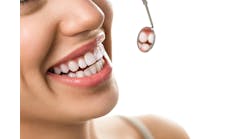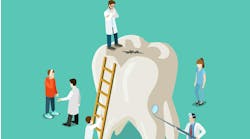George, my patient of 15 years, was in a wheelchair, a whisper of the man he was five years ago. He was not more than a skeleton with skin, really. Cancer does that to a person. His legs had braces because they were too weak to support his body alone, and his back was hunched over, I suspect from the invasion of the disease into his spinal column, or maybe he was just too weak to sit up straight.
The old George I used to know always wore a western belt with a big silver buckle, and a smile. But that day, he was too bent over for me to even tell if he was wearing a belt at all. The boyish face that had remained young even after we had both watched his children grow up, was drawn and tired from too much suffering. The bone cancer, like the bullets of a hidden sniper, had put holes in his bones; holes that now leaked their poison into the other parts of his body.
Before multiple myeloma struck, our conversations were of Indians, sand–cast silver buckles and rings, turquoise, and places in the southwest we had both visited; places such as Flagstaff, Sedona, Betatakin, Canyon de Chelly, and Winslow, where I lived for awhile. He would tell me about his travels to Utah and Arizona on vacation with his family, and he would take delight in my stories about Navajo children in Chilchimbito, Dilkon, and Dinehotso. We'd talk about how blue the sky was and how clean and sweet and dry the air was to breathe.
At one time, I had been a dentist on the Navajo Indian reservation — sort of a southwest “Northern Exposure” on the “res.” George's love of the southwest created an immediate interest and affinity when we first met. But this particular day, he talked only about the shunt in his left arm that they had been using for dialysis.
These shunts are large tubes to which the dialysis machine is attached; they are inserted into veins and protrude through the skin. He had shunts in both arms, but the shunt in his left arm wasn't being used, and he lamented how bad it looked and how he wished they would take it out. He had asked, but been ignored. I wished I could do it for him.
The reality is that the medical establishment of today often places little or no value on patients' emotional needs. Those who were once “doctors” have now become “providers.” Those who were once “patients” have become “subscribers.” Words are powerful forces that change the way we think about people: If you are just a provider, why care if a subscriber loses his dignity? “He probably won't live long, anyway.”
I think of George sometimes when I see a piece of Navajo jewelry or a rug, or when I revisit the southwest — as I sometimes do — and I am sitting on a Utah plateau in a quiet, red–rocked, remote cliff dwelling while looking down into a sand–washed ancient canyon laced with a silver stream and dotted with spring–green cottonwood trees. I think of him, too, when I am tired and out of patience and have to restrain myself from treating patients as subscribers instead of people.
When he left on that last day, I wanted to hug him because I knew I would probably never see him again. But I did not. I will always be sorry about that.
Jeffrey Trester, DDS, MAGD, has been in private practice since 1979. Prior to receiving his Mastership in the Academy of General Dentistry, he served in the U.S.P.H.S. and completed a two–year general practice residency. Dr. Trester has studied at the Pankey Institute. Contact him by e–mail at [email protected].





